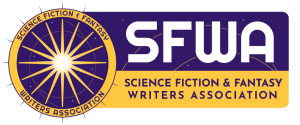by Jeremy Zentner
Editor’s note: This piece is part of a rolling series, Writing from History, in which creators share professional insights related to the work of using historical elements in fictional prose.
Fifty million dead, continents in ashes, and the emergence of a global struggle between two superpowers: World War II changed the path of history forever. It’s only natural that it would be a hot topic for historical fiction, especially the niche genre of alt-history. However, there are many approaches to writing alternate realities for World War II and its aftermath. Writers might benefit from exploring existing work in this subgenre when crafting their own.
Philip K. Dick’s The Man in the High Castle (1962) is probably the most well-known alt-history involving World War II. It’s also a work that explores the concept of alt-history within the narrative itself. In this timeline, Axis powers conquered the world, splitting the United States between Germany and Japan. Within the American Underground is a subversive book that tells the tale of the Allies winning the war, though not the same way as in our timeline. This provides a layer of irony for readers of Dick’s novel. The Man in the High Castle focuses on slice-of-life vignettes involving characters sometimes pretending to be someone they’re not, amid major plot intrigues like Germany’s plans to annihilate Japan. By the end, facades are lifted, exposing people to harsh realities in an unstable world. Dick’s approach requires a certain amount of narrative ambition, because it goes well beyond the scope of historical knowledge and hints at a larger, more psychedelic approach to the multiverse.
Some writers have drawn from Dick’s example to blend other science-fiction aesthetics with alt-history. Like Dick’s novel, Peter Tieyaras’s The United States of Japan involves a contraband story that imagines a world without fascism, in a US divided between Germany and Japan; only, instead of a book, a video game is the forbidden medium. The narrative priorities are different, though. This novel depicts a 1980s Japanese pop culture that rebels against the status quo, so we get more of a pulpy escapade that follows investigative tropes and uses oodles of cyberpunk technology. Tieyaras was clearly inspired by Dick, but his writing is also reminiscent of William Gibson’s Neuromancer (1984). The result is a work that honors its predecessors by creating a new world in the long shadow of genre classics.
Writers do not have to reach for dramatic science-fictional elements to create a thrilling alt-history novel, though. In Robert Harris’s Fatherland, a Kripo officer, Xavier March, investigates a plot that unravels the most horrendous cover-up of all time: the Holocaust. In a 1960s world where the Nazis dominate Europe, an aging Hitler wishes to open friendlier relations with the US and perhaps enlist US support against the Soviet Union. This is a pulpy novel that doesn’t dwell too much on hidden philosophies or fantastical technology. All that’s needed is a sure hand with police-procedurals and mystery plotting; the tragic horror of uncovering atrocity will provide the bulk of the narrative’s alt-history weight.
A writer might also choose a more intimate approach, as many authors with closer cultural ties to World War II atrocities have done. The Yiddish Policemen’s Union (2007) is another investigative story, but Michael Chabon’s book is more interested in questions of ethnic destiny and survival on a philosophical level. In this world, the US takes in Jewish refugees before the end of World War II, and Germany is defeated by 1946 instead of 1945. The state of Israel is later defeated in the Arab-Israeli War, pushing the rest of the Jewish population to Sitka, Alaska, where the US government offers a lease on federal territory until the early 2000s. The story progresses with one of the top Yiddish detectives investigating a murder that is eventually connected to a terrorist plot. Our protagonist finds himself without a homeland, as do his people, but a counterfactual like this one serves to highlight ongoing resilience across timelines, a key theme for many writers of alt-history.
Harry Turtledove, the master of alt-history to many, also framed work around Jewish characters, but within a more expansive career in the sub-genre. From writing about the American Civil War to the Byzantium, Turtledove’s range of historical what-ifs allowed him to craft a broad counterfactual lore. For some writers, the intricacy of their alt-history worlds is a strong part of market appeal. Still, Turtledove’s In the Presence of Mine Enemies (2003) is more of a family drama, which studies the impact of Jewish parents disclosing to their 10-year-old daughter the truth about their secret heritage, in a Nazi-dominated world. By the end, there is a major political shift in Germany that takes inspiration from Soviet history, especially the events that led to the collapse of the USSR. This approach allows Turtledove to write unique alt-history plots using a variety of historical events as source material.
Another family drama is Philip Roth’s coming-of-age story, The Plot Against America (2004). Roth is a titan in the literary world and brings his own experiences of antisemitism in America to the work. Narrated as a faux autobiography, The Plot Against America describes how Charles Lindbergh (a suspected antisemite in real life) runs against FDR’s third presidential term on an anti-war platform. When elected, Lindbergh begins to disenfranchise the Jewish population by implementing gentrification and youth work programs. For this novel, Roth documented historical accounts of antisemitism in the thirties and forties through research and personal exposure. One scene, involving our narrator encountering a pro-Nazi German-American group at a beer hall, draws from a childhood account. Crafting stories like this takes a certain degree of personal authority, more than the average commercial fiction, but doing so can bring forgotten and undesirable social histories to light.
Even if writing about World War II is not your preferred counterfactual, studying the range of stories available within alt-history might inspire you to tackle your own historical era. The goal is always to match the form of your story with your aims as a storyteller. Whether you focus on the historiography of another timeline, individual reactions to extreme circumstances, or flawed characters in a gritty whodunnit, the possibilities for crafting a distinct tale are endless.
 Jeremy Zentner is a librarian and a sci-fi addict. He has published short stories in sci-fi and supernatural fiction and was a finalist for the STBF Illinois Author Project. He lives in rural Illinois, USA.
Jeremy Zentner is a librarian and a sci-fi addict. He has published short stories in sci-fi and supernatural fiction and was a finalist for the STBF Illinois Author Project. He lives in rural Illinois, USA.

